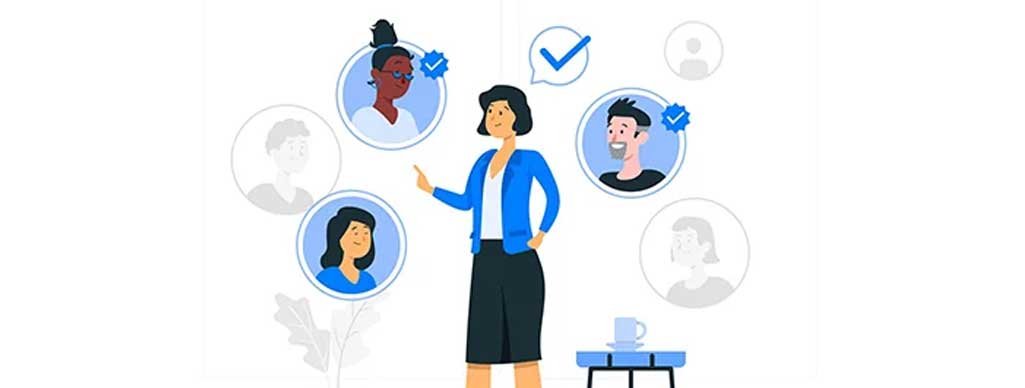
Anirban Chatterjee, IOCL
anirbanc@indianoil.in

Introduction
In the past two decades, rapid technology change has made businesses now focus on the global perspective. The rapid geopolitical changes are forcing organizations to change the way they do their business. In the forever competitive energy sector, there has been a rapid intrusion of technology to bring a cutting edge for Organisations. This has forced the organization to align its HR strategy with the business goals and objectives.
HR Analytics
Managing Human resources is challenging for every organization. Organisations have a distinctive edge over their competitors when they have a Human Capital who can effectively use their competencies and skills. Measuring skill attributes and performance is crucial for an HR Manager. HR or Workforce Analytics helps to transform the raw data into insightful and quantifiable results. With the help of HR analytics various workforce planning can be made in a more strategic approach.
The definition of HR Analytics differs from person to person. Some define it as an evidence-based approach that contains the elements of business intelligence, tools and methods ranging from simple reporting of HR metrics to the predictive model. However, HR metrics is merely a component of the Overall HR Analytics and not the full spectrum of capabilities that HR Analytics bring.
HR analytics can also be defined as the analytics which helps in the data constructing a storyline. It is mining the primary raw data for useful information ultimately relating the storyline to the overall business goal. HR analytics processes the raw data and then tries to point out the various troubled metrics of HR and highlights the critical areas to work on which helps in making important strategic decisions for the top management
Role of HR Managers in HR Analytics:
HR Managers must align HR data and initiatives to the organization’s strategic goals. Understanding HR analytics enables HR professionals to make data-driven decisions to attract, manage, and retain employees, which improves ROI. Because HR analytics helps HR managers and leaders make informed decisions to create a better work environment and maximize employee productivity. It has a major impact on the bottom line when used effectively.
As a result, through HR analytics we can improve company revenue, mitigate risk, execute strategies and minimize expenses by using statistics to analyse financial, operational HR and talent management data.
Levels of Analytics Maturity
Broadly there are four levels at which analytics is done depending on the level of complexity of analysis involved.
Level 1- Descriptive Analytics: Descriptive analytics describe what has happened in the past by way of using data reports and data visualisation. This is a reactive nature of analysis and merely shows what has happened already
Level 2- Diagnostic analytics: The significant difference that separates Level 2 from Level 1 is the frequency of the data reporting. This level of reporting is proactive, routine or even automated.
Level 3- Predictive Analytics: In this level Analytics uses historical data to predict the future by finding patterns and relationships between different variables. This helps businesses to brace for potential business risks.
Level 4- Prescriptive Analytics: This is the highest level of analytics where analysts can provide solutions to business problems. To reach this stage needs the highest levels of analytics maturity.
HR analytics in Strategic Decision Making:
Workforce analytics has become a vital part of strategic planning in the HR department. Decisions relating to human resources is aided by HR analytics to have a look at different perspectives and consider every aspect of Organizational goals:
- It helps to understand what is going on inside the organization
- It helps to track whether the implemented solution works or not.
- With the help of HR analytics, HR leaders can clearly identify and communicate precisely where the company’s investment in human capital is paying off.
- Helps in forward-looking workforce planning by anticipating the future demand and supply of talent, both locally and globally.
Most Commonly used Areas where Organizations use HR Analytics:
HR Analytics is most commonly used in the following HR Processes:
- Recruitment & Selection: AI & ML based recruitment is now commonly used. Organizations have also used Robots for interviewing candidates, which not only scans through a candidate profile but also record their facial expressions to understand the level of confidence of the candidate.
- Retention & Separation: HR Analytics is being widely used to analyze Attritions, predict attritions and also provide solutions to Organizations to retain talents
- Learning & Development: Training initiatives for priority skills gap analysis. Measurement of ROI on training is also widely used by organizations
- Compensation & Benefits Management: Analytics is widely being used to identify employee costs, evaluate remuneration process and pay competitiveness, build best fit models for compensation.
- Talent Management & Development: Analytics is used in turnover of high performers, promotion policies, talent management processes
- Performance Management: A big use of Analytics is in performance evaluation, analytics help in performance satisfaction, the effectiveness of feedback, revenue/operating cost per employee
- Manpower Planning & Optimization: A lean and efficient workforce is necessary for an organization, analytics help in manpower optimization by giving Job map, predicting manpower requirement, and analyzing the current workforce for optimization
- Leadership Development: Leadership development and succession pipeline are key areas where analytics play a big role.
Benefits of HR Analytics:
The cost of recruiting, training, retaining and losing human resources are increasing for companies. They want to retain their talent pool in ways that are meaningful to them. HR analytics is the tool that will help understand and utilize their resources in the most optimum way.
Human resource analytics enhance employee and customer experience, which maximizes sales, improves performance and experience, and boosts outcomes. HR professionals are now expected to draw valuable insights and analyse data to help the organization reach its goals.
- Boosts employee efficiency and performance
Organizations measure their success by tracking performance and efficiency, which can be done by offering work-life balance and flexible schedules. HR analytics tracks training costs, overtime, absenteeism, employee productivity and much more. By retaining engaged and satisfied workers, the company will enjoy lower business costs. Recruiting itself will become more proactive, to render a competitive advantage and increase brand image and value.
- Speed up recruitment processes
Recruiting is a cost and time-intensive business, and analytics in HR helps determine who could fit in with the company culture. Choose candidates who fit the features described in their job profile, highlighted in employee satisfaction surveys, annual reviews, team assessments and exit interviews. All of these can be equipped to save time, save costs and prepare impactful salary and benefits packages.
- Enhance talent processes
HR professionals know that talent processes go beyond pre-hiring, hiring and annual performance reviews. They also include counselling, training and recreational activities. HR data analytics identify challenges, monitor talent acquisition analytics, get employee feedback (such as current experience, benefits and possible changes) and work on the challenges.
- Improve productivity
Employee productivity lies on multiple factors such as work environment, office infrastructure, leadership and colleagues, salary and benefits and job satisfaction. Implement employee engagement strategies to analyse the same and note the results.
- Enhancing employee experience
Apart from checking applications to fill up open positions, HR professionals also run through the employee experience and implement suggestions for improvement. Happier employees are better engaged and promise higher retention, higher productivity and enjoy higher professional success. Metrics such as productivity, engagement and attendance are generally evaluated. Thus, the HR department understands its strengths and weaknesses regarding vacation policies, training and development and compensation.
- Gaining employees’ trust
Talk to employees, make them feel heard, record responses, suggest ideas and make a plan. Now that you have an armful of employee data and feedback, HR analytics helps realize what needs to stay and what needs to be improved. Making positive changes to workplace policies are noticed by the employees, gaining their trust. Use the data to remedy existing issues, drive initiatives and help the management make wise decisions. All of this build employee retention, employee productivity, employee wellness, employee success and work culture.
Conclusion:
Intense global competition and rapid changes in technology are forcing organizations to change their basic strategy. Today, every organization must focus its attention on aligning its HR strategy with overall business goals. To have an upper hand over their competitors, organizations must establish HR analytics for yielding accurate and real-time information.
Posted in HR Technology | No Comments »
Recent Articles
- The Communication Network: Public Relations in the Digital Era
- HR Analytics – Enabler for Strategic Business Partnership
- Machine Learning applications in the domain of HR Analytics
- Pandemic provided the tailwind to HR technology sector
- Gamification using Digital Twin for Leadership Management
- HR Tech-Options to evaluate
- Metaverse & Future Workplace
- Beat Burnout by investing in HR Technology and Automation
- How to Harness the Power of AI in HRM
- Driving innovation & Experimentation through Digital HR Transformation & Building Employee Experience
- HR Tech Trends
- Decoding the ‘Digital Personal Data Protection Bill 2022’
